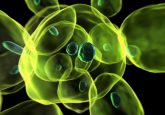Flow cytometry studies from Charles River Laboratories

Challenges of flow cytometry validations
Multi-parametric analysis of thousands of cells per second to adequately identify or functionally characterize complex cell populations of interest can be achieved using flow cytometry platforms. Spanning from basic research, discovery, preclinical to clinical, flow cytometry is a valuable tool, especially with the increasing proportion of biologics in the pipeline. Flow cytometry has proven itself to be an indispensable tool to assess safety, receptor occupancy (RO) or pharmacodynamics (PD). The development and validation of flow cytometry based methodologies can be challenging, given it involves a cellular aspect, that standardized cellular reference materials are limited and that these assays are often used for multiple different purposes. It is critical to know up front what the flow cytometer assay will be used for in order to conduct the appropriate validation to support GLP studies. No guidelines for the validation of flow cytometry methods are currently available for the preclinical setting. Various working committees have taken initiatives in the writing of guidance documents describing flow cytometry method validation. However, these recommendations have not yet been integrated in an official document released by the regulatory agencies as it has been done for other analytical methodologies.
To download this poster, please click here!
Comparison of TK6 micronucleus data generated by flow cytometry and microscopy
Good product stewardship requires assessment of potential genotoxicity using a battery of tests. The most recent addition to the genetic toxicity core battery of in vitro assaysis the mammalian cell micronucleus assay. Historically, micronuclei (MN) are scored following chemical exposure by microscopy. However, flow cytometry also may be used to enhance the precision of the assay by increasing the number of cells scored per culture (e.g., 10,000 vs. 2,000 cells). Here we report the direct comparison of test results obtained from the same cultures using each method. Utilizingeight known genotoxic chemicals, including some promutagens requiring metabolic activation (S9), TK6 cells were exposed for 4 hours ±S9 and for 27 hours -S9 and dose-response curves were generated by both scoring methods. Cultures were harvested at the appropriate time and processed for each scoring method. Pooled data across the assays (N=198 cultures) indicated a good association between the scoring platforms (r2 = 0.67). However, residuals indicated a bias towards higher MN frequencies in the flow cytometric data, which could be explained by the larger dynamic range of the assay. This inherent methodological difference did not adversely impact study outcome, as each chemical was either positive or negative across all exposure conditions and both scoring methods. The bias of flow cytometry to yield higher MN frequencies than microscopy was largely driven by results for the 27-hour -S9 treatment, as 5 of the 6 chemicals were positive in this treatment design at lower concentrations. This assessment was limited by the exclusion of weak genotoxicants, which would allow a more in-depth analysis of the sensitivity between the two methods. Cytotoxicity data also will be compared, as relative-nuclei counts are a built-in metric that may be appropriate regardless of the different generation times across exposure conditions. Overall, these data support the use of flow cytometry to score MN in TK6 cells.
To download this poster, please click here!
Historical immunophenotyping data in pre-clinical species
Flow cytometry allows multiparametric analysis of thousands of particles per second and helps to adequately identify or functionally characterize complex cell populations of interest. It is often used in basic research, discovery, preclinical and clinical trials. During the preclinical phase development of new drugs, flow cytometry has routinely been used for assessing the immunotoxic effects of a candidate drug by evaluating the immunophenotype of various cell populations in whole blood, tissues, or other matrices. Despite the fact that it is being used by multiple different laboratories, combined database presentation and comparison of preclinical immunophenotyping data in various animals, strains and tissues/whole blood has been limited. The objective of this study was to compile relevant preclinical immunophenotyping data from monkeys (cynomolgus, rhesus), dogs (beagle), rats (Sprague-Dawley, Wistar, Fisher) and mice (various strains), from different matrices. The database from a single site was extracted from control data generated from over fifteen years of work. Specie, strain, age, cell populations and sample types were grouped to provide a representation of expected cell population distribution profiles.
To download this poster, please click here!
For more information on Charles River (MA, USA), please click here!






